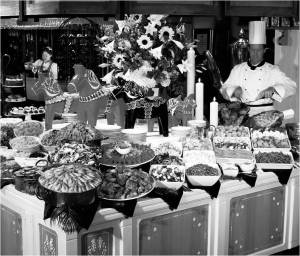Natanael Banegas Jr.
Staff Writer
In the United States, Christmas is one of the major holidays of the year. Next to only to possibly Black Friday, Christmas Eve is the shopping day of the year with an estimated $35.3 billion spent on online shopping alone. This holiday is not limited to just our country here in the U.S. There are many common traits to how Christmas is celebrated around the world from singing and dancing, gift giving, feasting and religious activities.
Some of the differences that exist in different countries are the date that Christmas is celebrated on and the length of the celebration. It varies according to the various traditions of different churches and local customs. In European countries, where it is common for many to celebrate the holiday, there is a twelve-day festival. It starts on Christmas day and goes on until January 6. It is a holiday known as the Day of Epiphany, giving a literal meaning to the Twelve Days of Christmas. However, the country of Mexico, which has thirty unique customs connected to Christmas, has devoted one of the longest holiday seasons called the Guadalupe-Reyes Marathon. It contains seven holidays strung together and has a period of festivities that is nearly a month long from December 3 to January 6 with a number of different feasts, piñata parties and various other practices.
Aside for the various lengths of Christmas celebrations, there are also many distinct regional mascots associated with Christmas. Some of these mascots are older than the more well known Santa Clause but have adopted elements to make them more modern and kid friendly. One example is the thirteenth Yulemen or “jólasveinarnir”of Icelandic tradition. Originally a group of troll pranksters and criminals that harassed the farmers and scared children, they have now become the country’s version of Santa Clause. Though a foreign concept here in America, the idea of Christ the Child as the bearer of gifts is a tradition in quite a few countries. In Germany the Christkindel or Christ Child is depicted as a spirit of fairy that gives out gifts, a ringing of bell signals finished putting under a tree. In Latin America, the infant Christ as gift giver goes by different names depending on the country. One gift giving figure that is unique to Italy is “la Befana.” This is a witch that gives gifts to children on the day of Epiphany.
Singing and dancing is another aspect of that is common among different people who celebrate Christmas. In Germany on the day of Epiphany groups of youths, usually teenagers, call “Sternsinger” (star singers) go from door to door and sing songs dressed as the wise men that searched for Christ. Often the leader of the group holds a wooden star to represent the star of Bethlehem. In Guatemala, people come together and hold hands and sing wearing a special holiday hat known as Purtnia. The people of El Salvador, Guatemala and Honduras also celebrate on Christmas Eve with fireworks ranging from small firecrackers and sparklers to the larger roman candles and mortars accompanied with music.
Of course no Christmas celebration is complete without a holiday feast. In Sweden there is the Smorgasbord feast, its name suggests it has a wide array of native foods such as fried hot dog sausages, Swedish meatballs, a potato casserole called Jansson’s Temptation, along with fish dishes, rollmops, and Lutfisk among other items. Accompanying the large feast is always something sweet. One Christmas dessert that is well known is the Italian Panettone. This is a large dome shaped sweet bread with a sourdough like consistency filled with candied fruit or raisins that is often served with mascarpone cream, hot drinks or wine. Another sweet is bread is the Roscas de reyes. It is known as “the three Kings Bread.”
This is only a quick look at the various Christmas traditions from around the world. Hopefully this article has been helpful in providing students here a better understanding of the different cultures and how they celebrate Christmas and the holiday season.



Be First to Comment